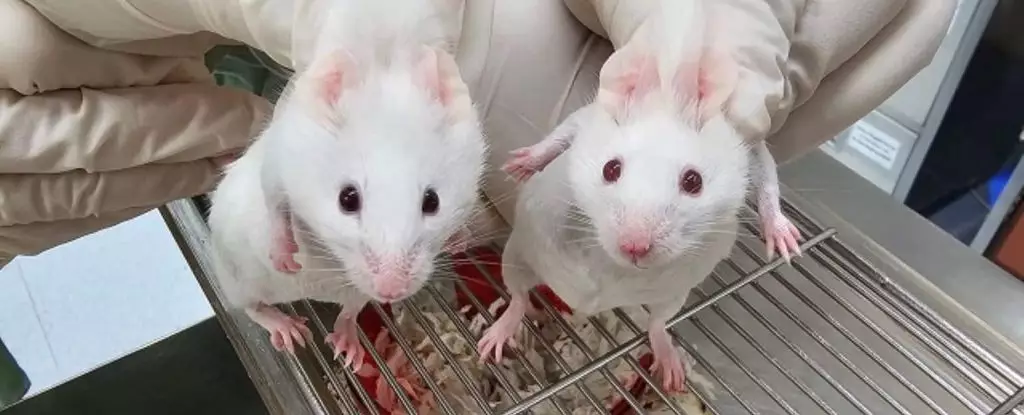In a remarkable scientific undertaking in Hong Kong, researchers have succeeded in creating mice that bear the genetic imprint of choanoflagellates, a lineage of single-celled organisms thought to be closely related to the ancestors of animals. This experiment, involving the transformation of mouse embryos through the integration of choanoflagellate genes, reveals profound implications for understanding the evolutionary roots of animal life. The genetic manipulation has resulted in mice sporting uncharacteristic traits—most notably dark and dappled fur, distinct from any typical mouse phenotype. While they appear ordinary at first glance, these creatures embody a significant evolutionary narrative rooted not just in their genetic makeup, but in the very history of multicellularity.
Central to this research is the concept of pluripotency—the capacity of embryonic stem cells to evolve into various specialized cell types. This functionality is crucial for the development of complex organisms. It has long been assumed that pluripotency emerged in tandem with the rise of multicellular life around 700 million years ago; however, observations from prior studies had hinted that the roots of this capacity might lie deeper in evolutionary history. Choanoflagellates, while simple organisms that do not possess stem cells, carry genetic traits analogous to those found in multicellular animals. This suggests that essential building blocks for pluripotency may have existed prior to the advent of multicellularity itself, potentially reshaping our understanding of how complex life evolved.
The ambitious project initiated by a team led by researchers from the University of Hong Kong involved replacing the mouse-specific Sox2 gene with its choanoflagellate counterpart. In doing so, they aimed to explore the functional relationship between these genes. Following sophisticated reprogramming and cloning processes, stem cells derived from these altered genomes were introduced into mouse blastocysts, which were then implanted into surrogate mothers. The birth of chimeric animals—those with mixed genetic properties—signified a historical convergence of genes that had diverged for millions of years.
These chimeras emerged displaying a blend of conventional mouse characteristics alongside distinctive markers attributed to their genetic ancestry, signaling the successful interaction of choanoflagellate genes with mouse developmental processes. Such findings empower researchers to reassess the potential functionalities of choanoflagellate genes in vertebrate biology, which had previously been overlooked due to the assumed exclusivity of pluripotency to multicellular organisms.
The results obtained from this study carry significant implications for our understanding of evolutionary biology. The vital roles played by transcription factors such as Sox and POU have been established in multicellular organisms. However, the discovery that choanoflagellates exhibit similar Sox genes may alter existing hypotheses regarding when and how these genes evolved. Instead of genes adapting solely for multicellular applications after their origin, it may be that their precursors were already present in unicellular ancestors, creating a foundation for later evolution.
Academic dialogue on whether these transcription factors facilitated the emergence of skillful pluripotency rather than simply being a byproduct of an increasingly complex organismal morphology is crucial. The study posits that the gene families critical for vertebrate development were not merely created in the wake of multicellular evolution but may have existed in simpler forms long before. This ancestral presence suggests a continuity of function across vast epochs of evolution, sharpening our insight into how life diversified on Earth.
In addition to broadening our comprehension of evolutionary biology, these findings may also bear significant repercussions for the field of stem cell research. The potential to repurpose choanoflagellate genes for advancements in stem cell therapies opens doors to innovative applications in regenerative medicine. Understanding the biochemical similarities between choanoflagellate genes and contemporary animal genes could inspire new strategies for manipulating pluripotency, enhancing our ability to steer stem cells toward desired therapeutic outcomes.
This investigation into the genetic interface between single-celled choanoflagellates and mice raises essential questions about the building blocks of life and the evolutionary pathways that lead to the complex intricacies of modern organisms. As researchers continue to untangle the connections between our unicellular relatives and higher forms of life, the narrative of evolution becomes increasingly complex and fascinating, revealing more about the shared heritage of life on Earth.


Leave a Reply